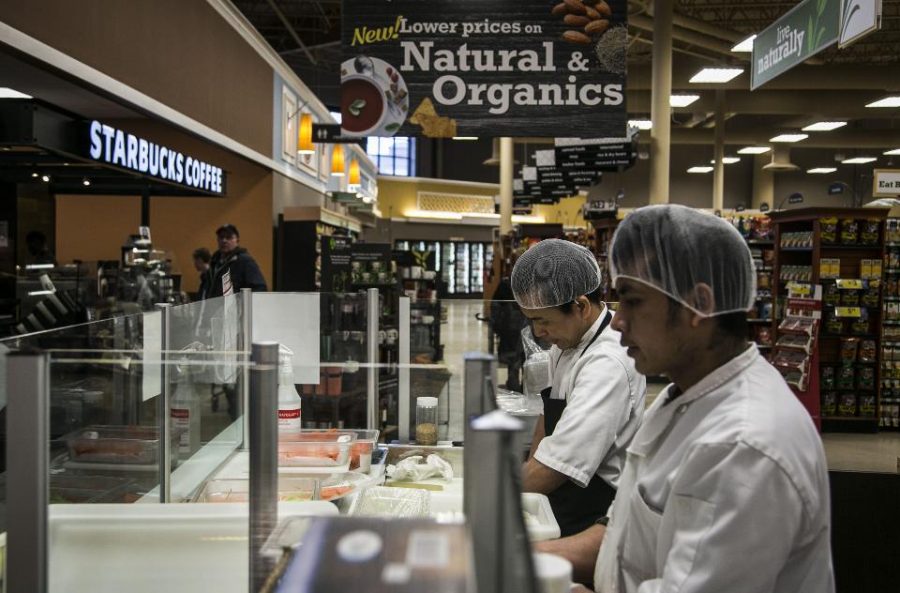A Matter of Health
Grocery stores have sections specifically allotted for organic foods, normally right when the customer walks in.
April 14, 2017
As American industries have slowly begun to conform to healthier styles of eating, the opportunities for people to easily change their diets has greatly increased.
“Healthier, organic food is something that a lot of people want now,” Tom Thumb Assistant Manager John Anderson said.
Now restaurants are changing their menus and stock to fit a healthier lifestyle. Due to the sudden increase in calorie-conscious people, restaurants have begun to gear some of their menu options towards the vegan and vegetarian side.
Restaurants, from formal to fast-food, began to offer downsized portions of their meals and also offered the calorie count for a meal. Now they are required to offer smaller portions and put the calorie count of the meal at the end of the description on the menu so that people can track their intake.
“Healthy options on menus are extremely important,” Patricia Conway, a retired dietician, said. “It allows people to still get all the necessary nutrients with a quick meal that they need during the work day.”
Fast food restaurants have added items and changed their menu in order to fit what is becoming the new normal in today’s society. Wendy’s added two new salads to their already diverse menu in 2014 and has added a few more since then. Chipotle gets all their food from local farms and ranches and made their menu fully non-GMO in 2013.
By adding nutrition facts to their menus and implementing light, vegetarian, and vegan options, people are able to understand what they are consuming. According to Harvard Health Publications, eating in lighter foods or avoiding meat altogether can lower a person’s risks of illnesses such as heart disease, cancer and type two diabetes.
Changing the types of food a person eats and knowing how much they are eating are easy ways for a person to stay healthy when they go out to eat. It allows them to track their calories and also provides much healthier yet still filling and tasty options for their meals. In an attempt to lose weight, 44 percent of people keep track of their calorie intake with every meal.
Grocery stores have also tried to steer their consumers towards the more healthy options of food. Many stores, like Kroger and Tom Thumb, have begun placing their healthier foods in more obvious and eye-catching places.
One type of healthier option that stores have had to increase is gluten-free foods. With more and more people developing gluten allergies, stores have seen an increase in the sales of gluten-free foods.
“People have become more gluten conscious and that has shown in our sales,” Anderson said. “They will buy more gluten-free cereal or even flour to accommodate their new diets.”
Stores have also increased the amount of organic products that they offer. In 2015, the organic food market, which offers more nutrients and less chemicals than other foods, reached an all time high of $43.3 billion in sales. Whole Foods was the largest seller of organic foods in 2015 with $14 billion in sales during the fiscal year. The next largest were Kroger with $11 billion and Costco with $4 billion in sales.
“A lot of people are buying more organic things,” Anderson said. “People especially like fresh produce, and we have had to bring in much more produce than in past years.”
Overall, today’s society is leaning towards a healthier lifestyle due to increased health awareness, and some of the businesses in the industry are making it a much simpler transition. The increase in health-conscious options at both restaurants and grocery stores has increased the likeliness for people to successfully change diets. With the increase in healthy options at restaurants and grocery stores, now is the prime time to change to a more nutritious lifestyle.












